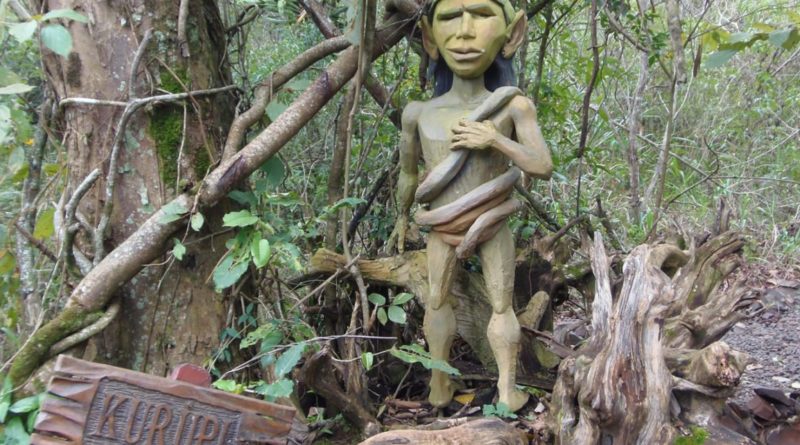The Myths, Legends and Folklore of Paraguay
Paraguay is a modern country undeniably and obviously forged by the moulding hand of centuries of tribal culture. Today’s forward-thinking nation is the product of a real cascade of different threads of human history, all intermingled together to form a plethora of pre and post-colonial ideology that’s retained much of the traditional, earthy and mystical ideas that were popular in the past.
For this reason, the myths, legends and folklore that’s visible in Paraguay today can be said to offer perhaps one of the most authentic glimpses of Latin culture in all of South America, giving visitors a glance at the unique set of pseudo-religious and supernatural ideas that run like blood through the very veins of today’s contemporary Paraguayan society.
As with so many of Paraguay’s ancient customs and practices, the folklore tradition begins with the Guarani tribes people. In much the same way as in ancient heroic Greece, for the majority of centuries of their development, the tales and stories that formed the backbone of the central Guarani folklore were passed on solely by word of mouth. This means that most all of the original stories were intended, like the Homeric epics, to be spoken, a fact that’s testimony to the tradition’s colourful use of imagination and language.

But, while oral culture lent itself to imaginative retellings, it also meant significant de centralisation, and there’s a considerable divergence evident in many of the stories found across Paraguay. This was probably due to the difficulty of lingual transmission between separate tribes, and meant that Guarani folklore only enjoyed proper canonisation much later in its history, probably with the arrival of European missionaries and the Spanish colonial introduction of codices, though perhaps never entirely.
That said, there are a number of curious similarities between the Guarani folklore tradition and the well-known European religious ideologies of the West. Both generally involve dramatic and supernatural creation myths, totemic central characters and a classic polarisation of good and evil. The single, and indeed most striking similarity between these two ostensibly entirely divergent mythic traditions though, is the human creation story. Just like in the Christian canon, Guarani tribe lore identifies the first human ancestors: Rupave and Sypave; a Paraguayan Adam and Eve that spawned mankind in general.
What’s more, amidst the sprawling pantheon of minor deities and animalistic nature worship that’s a feature of many tribal lore narratives in Paraguay, it’s the figure of Tupa that comes up time and time again as the presiding god. Tupa is probably somewhere in between the all-knowing and all-seeing omniscient god of the Christian tradition and the benevolent, organic earth mother that’s associated with North American Indian tribes more widely, and is attributed with the creation of earth from atop a hill in the Aregua region of Paraguay, around just 30 kilometres from the capital, Asunción.
It’s said that Tupa first set about creating the organic landscape, and then moved onto life. Perhaps somewhat unusually the animals are said to have come first, and the devil second, both, notably before mankind. The figure of the devil is another curious addition to the Guarani pantheon, offering a negation of the worldly ‘good’ and a suitable polemic from which Tupa could anchor the unstable morality of her first human creations.
Another central component to the Paraguayan folklore narrative is the presence of the seven monsters. These are said to be descended directly from Rupave and Sypave (remember the Guarani Adam and Eve), born from Kerana, the first female in the second generation of mankind. These seven monsters were to become the cursed demigods of Paraguayan mythology, a base of characters from which most of the fables, morality tales and oral catechisms could emanate.

While their names may be hard to pronounce (Teju Jagua, Mboi Tu’I, Luison, Monai, Ao Ao, Jasy Jaterei, and Kurupi) the seven monsters came to represent the central processes of day-to-day life for the tribespeople of Paraguay. The figure of Luison is perhaps the most grotesque of all the Guarani characters. Supposedly the most cursed of all the demi-god monsters, Luison was said to linger in graveyards, crouching ominously behind the sepulchres and spying out victims who he could devour or lead to the underworld. In this way he mirrors the western sceptre of death, a negation of all that’s living, breathing and healthy.
However it’s Kurupi who is probably the most prolifically propagated mythological character in all of Paraguayan folklore. Considered to be the god of fertility and pregnancy, this stout and ugly figure was also exceptionally phallically endowed, and thought to be responsible for all unwanted children and cuckolding in the Guarani tribes.

